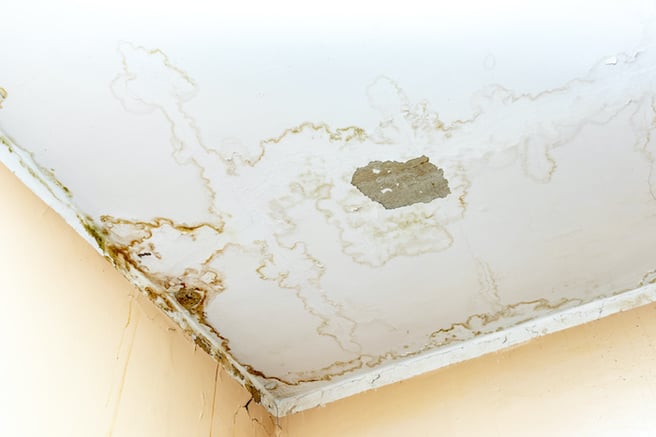Factors That Lead to Bathroom Water Harm
Factors That Lead to Bathroom Water Harm
Blog Article
This great article in the next paragraphs involving How to Repair and Prevent Bathroom Water Damage? is amazingly insightful. You should investigate it.

Water damage typically takes place in the bathroom because of the water made use of everyday. Often, the damage could be a little mold and mildew from the shower. Other times, it's substantial damages on your floor. Whatever it is, it is constantly excellent to understand the cause and stop it before it takes place.
This guide will go through several of the typical root causes of water damage in the shower room. We will additionally analyze what you can do to avoid these causes from harming your shower room. Let's dive in.
These are the usual factors you would have water damage in your bathrooms and just how you can identify them:
Excess Wetness
It's awesome to have that lengthy shower as well as splash water while you hem and haw as well as act like you're performing, yet often these acts could create water damage to your shower room.
Splashing water around can trigger water to go to edges as well as create molds. Watch exactly how you spread excess wetness around, and also when you do it, clean it up to avoid damage.
Splits in your wall floor tiles
Restroom wall surface ceramic tiles have actually been specifically designed for that objective. They safeguard the wall from wetness from people taking showers. Nevertheless, they are not indestructible.
Sometimes, your washroom wall floor tiles crack and permit some wetness to seep into the wall surface. This can possibly damage the wall surface if you don't take any activity. If you observe a crack on your wall surface floor tiles, fix it quickly. Do not wait till it ruins your wall surface.
Overruning toilets and also sinks
As humans, often we make mistakes that might trigger some water damage in the washroom. For example, leaving your sink tap on can cause overflowing and damages to various other parts of the bathroom with wetness.
Additionally, a faulty bathroom might create overruning. For instance, a busted toilet manage or other parts of the tank. When this takes place, it could damage the flooring.
As quickly as you discover an overruning sink or commode, call a plumbing to aid deal with it right away.
Ruptured or Dripping Pipelines
There are several pipes bring water to various parts of your washroom. Some pipelines take water to the toilet, the sink, the taps, the shower, and numerous various other areas. They crisscross the little area of the bathroom.
Occasionally, these pipelines can get rusty as well as ruptured. Various other times, human activity could create them to leak. When this happens, you'll discover water in the edges of your washroom or on the wall surface.
To spot this, watch out for bubbling walls, molds, or mildew. Call a specialist emergency situation plumbing to repair this when it occurs.
Roof Leakages
In some cases, the issue of water damage to the bathroom could not originate from the restroom. For instance, a roof leakage might create damages to the washroom ceiling. You can find the damage done by checking out the water spots on the ceiling.
If you discover water discolorations on your ceiling, inspect the roofing to see if it's damaged. Then, call a professional to help address the concern.
Final thought
Water damage to your shower room can be frustrating. Nevertheless, you can handle it if you protect against a few of the causes discussed in this guide. Call an expert emergency plumbing if you observe any kind of extreme damages.
How to Repair a Water-Damaged Wall in the Bathroom
All you need to know to repair bathroom wall water damage – from identifying the water source to finishing the repair professionally. If you don’t act quickly to resolve a water damage problem, you could find that it develops into a mold issue and/or cause structural damage to your home. Follow this guide to repair your bathroom before it's too late.
All you need to know to repair bathroom wall water damage
Water damage is a common household problem, and one that, if left unrepaired, can quickly lead to structural problems and health issues. The two most likely rooms where water damage may occur is the bathroom and the kitchen – where water is used often and there is high humidity.
What is water damage?
It is easy to think of water damage as caused by a flood or leaking tap or burst water pipe. However, when water damage is assessed, there are three main categories into which water falls (as classified by the American National Standards Institute). These categories are defined as:
Category 1 Water – ‘Clear Water’
This is sanitary water. There is usually no major threat to health by washing with this water, drinking it, or inhaling if it is streaming. Most water that enters your home will be category 1 water, while most water leaving your home will be either category 2 or 3 water. It may also come from melting snow, rainwater and water tanks.
Damage caused by this type of water can usually be repaired or restored, though this doesn’t mean that there are no potential health issues.
Category 2 Water – ‘Grey Water’
This is contaminated water – sometimes considerably so – and will cause illness if consumed or if it comes into contact with your skin. Water damage in this category is often caused by overflows from toilet bowls, and damage to washing machines and dishwashers. While damaged items might still be repaired or restored after damage by grey water, it is more difficult and more expensive to do so.
If the water damage in your home has been caused by grey water, it is advisable to have repairs made by professionals.
Over time, grey water will deteriorate and become black water.
Category 3 Water – ‘Black Water’
Category 3 water, also known as black water, is highly contaminated and a great risk to health. This may contain raw sewage, heavy metals, and other toxic substances. It will smell terrible.
If this is the water that has caused damage in your bathroom, do not touch it. Stop the water flowing if possible, seal the room and call the experts: it really isn’t worth the risk of ill health and disease that could be fatal. It is very unlikely that items can be repaired or restored if they have been damaged by black water.
https://www.porterscleaning.com/blog/how-to-repair-a-water-damaged-wall-in-the-bathroom/

Hopefully you enjoyed our topic on How to Repair and Prevent Bathroom Water Damage?. Thanks so much for spending some time to read our posting. If you appreciated our post plz make sure you remember to share it. Thanks for your time. Please check our blog back soon.
Book Now Report this page